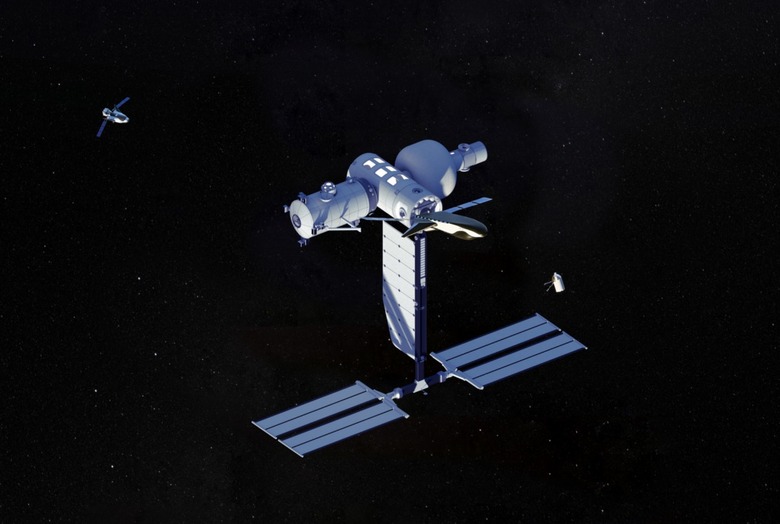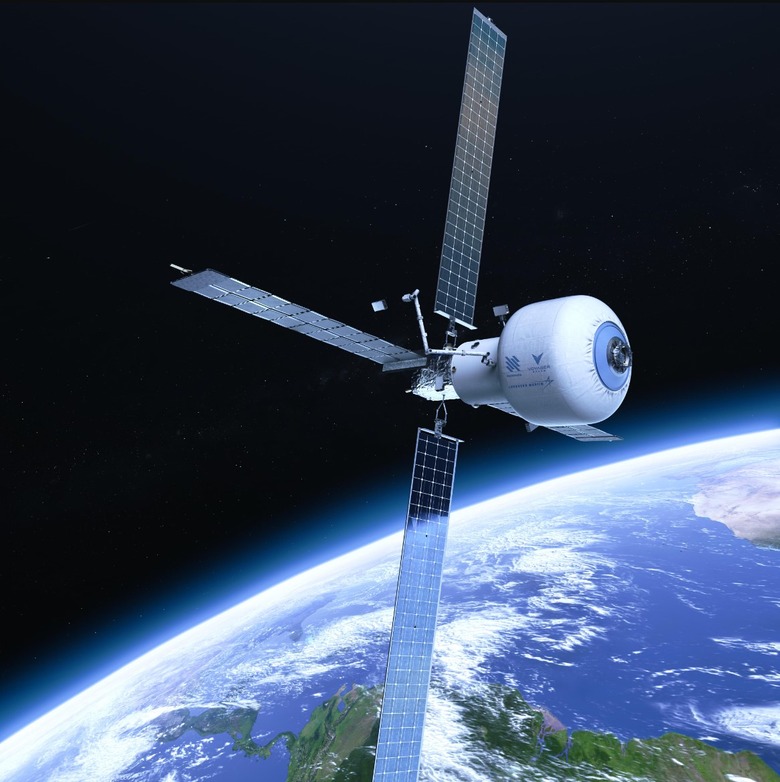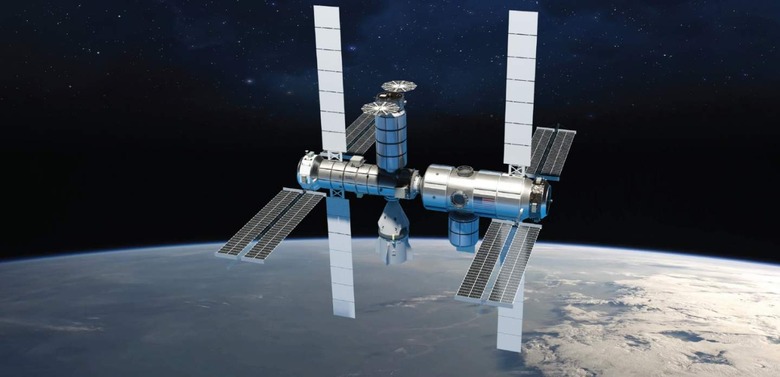NASA Reveals The 3 Contenders To Replace The International Space Station
While the International Space Station is the destination for conducting research in low-Earth orbit, it will not be that way forever. The United States and NASA, along with partners worldwide who are already helping to maintain the ISS, will continue to fund the space station for a few more years, but eventually, it will have to be replaced. NASA has now named three companies selected to submit designs for new space stations, and there are some familiar names on the list.
Three big winners in NASA's search for an ISS replacement
NASA revealed three companies that have been selected to receive funding "to develop designs of space stations and other commercial destinations in space," along with the amount of money each company has been awarded. Those companies include the Jeff Bezos-owned Blue Origin ($130 million), Nanoracks LLC ($160 million), and Northrop Grumman Systems Corporation ($125.6 million).
Now that these three companies have been selected, NASA says that the first of a two-phase plan to replace the International Space Station with commercial endeavors has begun. With funding secured, these three companies will "formulate and design commercial low-Earth orbit destination capabilities suitable for potential government and private sector needs." NASA expects this first phase to last until 2025.

Blue Origin's intentions were known before it was selected to receive this funding. Back in October, Blue Origin and partner Sierra Space revealed early plans to build a space station called Orbital Reef. Orbital Reef is intended to be a mixed-use space for research, commercial, and government purposes, with Blue Origin providing reusable transportation to shuttle clients back and forth to the space station. Blue Origin and Sierra Space intend to launch Orbital Reef sometime in the second half of this decade.
Nanoracks LLC, on the other hand, plans to develop a commercial space station called Starlab, currently slated to launch in 2027. Starlab is intended to host four astronauts continuously and will be similar to the ISS in terms of "power, volume, and payload capability." In addition, it will house the George Washington Carver Science Park, which will feature "a biology lab, plant habitation lab, physical science and material research lab, and an open area workbench."

Northrop Grumman, the final company receiving funding through NASA, has plans to develop a space station that sounds a little more conceptual at this point. We know it'll be modular, so it can be expanded beyond its base configuration, with Northrop Grumman anticipating add-ons such as crew quarters, labs, and even "facilities capable of artificial gravity," which sounds pretty wild.
Commercialization of low-Earth orbit?
It might be a little strange to hear NASA talk about the commercialization of low-Earth orbit because, throughout its history, there hasn't really been a profit motive driving NASA's research in space. Still, NASA is looking to set the stage for the commercialization of space, and even sees itself as a client of these space stations once we're in a post-ISS future.

That said, there are potential benefits to opening up low-Earth orbit to private enterprises. Low-Earth orbit is a good place to conduct research free of Earth's strong gravitational pull. The International Space Station has been home to that research in recent years, but that research will have to move elsewhere once it reaches end-of-life. Giving everyone access to labs and research stations in low-Earth orbit could open the door to advancements that wouldn't necessarily be possible on Earth or allow for experiments that are too delicate for Earth's gravity.
NASA itself says that it plans to become "one of many customers in low-Earth orbit," potentially using private space stations to train astronauts before missions to the moon or even to Mars. In fact, in its announcement today, NASA says that it will be able to obtain services the government needs from the private space stations at a lower cost. That, in turn, will enable the agency to focus on its Artemis missions, which promise to return humans to the moon by 2024 as a stepping stone to eventual Mars missions.
So, while the space game is changing, NASA will still be conducting research and training in low-Earth orbit for some time to come. The development of these space stations will take a long time, but if everything pans out as expected, we should see them launch sometime in the latter half of this decade.
